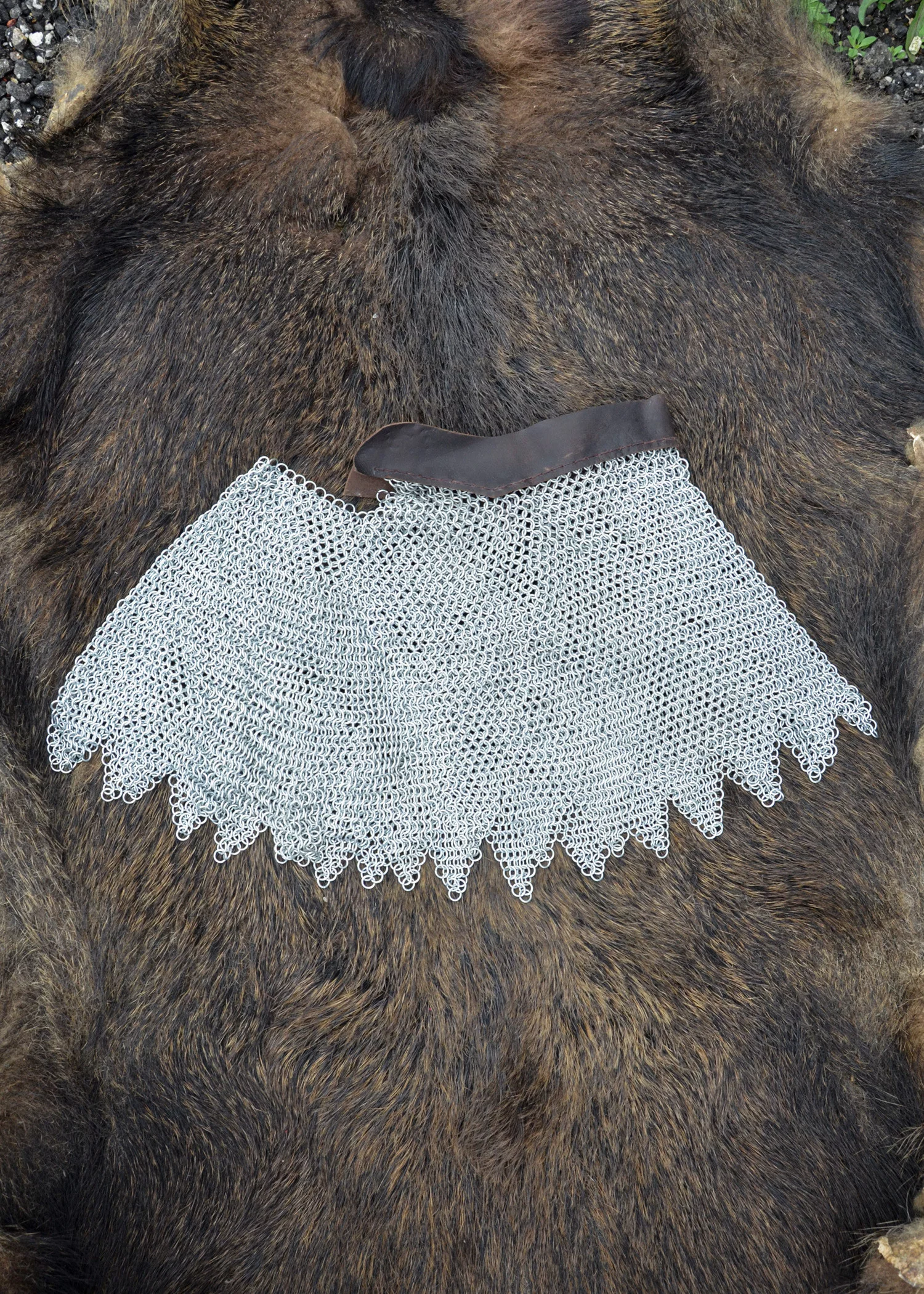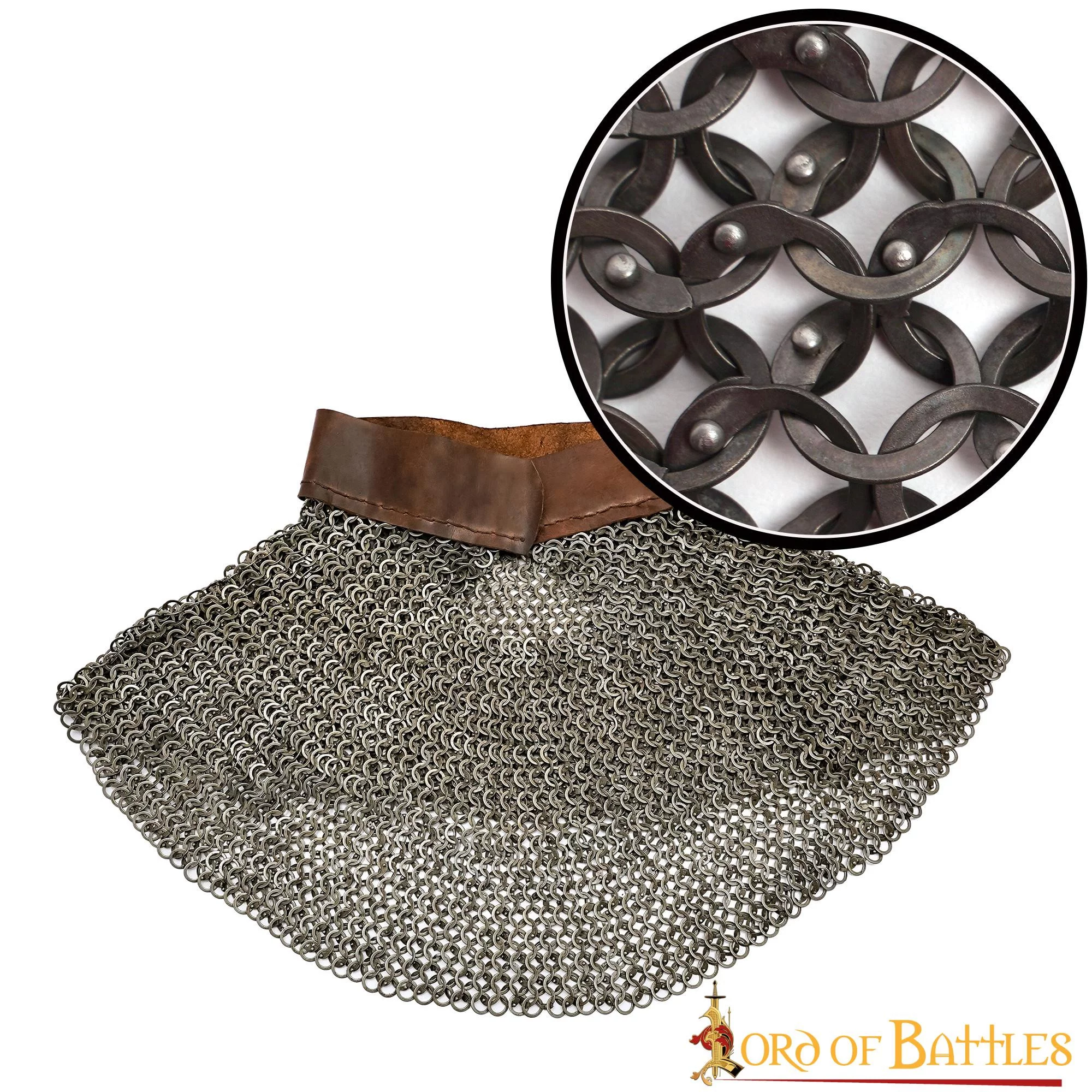What is an Alpartaz?
The alpartaz is a key piece in medieval armor, specifically a chainmail that protects the neck and shoulders of the warrior. Below are its main characteristics and importance in the historical context of armor.

Definition and Function
The alpartaz is a flexible curtain of mail, designed to offer protection to the most vulnerable parts of the body during combat. Its main function is:
- To protect the warrior's neck and shoulders from direct attacks.
- To allow free movement of the neck, essential for mobility in combat.
- To complement the overall protection provided by other parts of the armor, such as the helmet and gorget.
Characteristics of the Alpartaz
Among the characteristics of the alpartaz, we can highlight:
- Material: It is generally made of metal mesh, providing both flexibility and strength.
- Location: It attaches to the edge of the helmet, ensuring a secure transition between the head and torso.
- Coverage: It extends from the helmet to the area of the neck and shoulders, ensuring continuous protection.

Historical Importance of the Alpartaz
The alpartaz played a fundamental role in the evolution of medieval armor. Its contributions are especially notable in:
- Protection of vulnerable areas: The neck and shoulders are exposed areas, and the alpartaz was specifically designed to reduce risks in these zones.
- Flexibility: Its structure allowed freedom of movement, something essential in battles where agility could be the difference between life and death.
- Composition of complete armors: By the end of the Middle Ages and the Renaissance, warriors wore complex armors that could consist of up to 250 articulated pieces and weighed between 25 and 30 kg.
Materials Used in the Manufacture of the Alpartaz
For the construction of an alpartaz, specific materials were used that guaranteed its functionality:
- Steel mesh: The main element, composed of interconnected steel rings with an approximate diameter of 8 mm. This interlacing pattern (4 rings to 1) offered good protection and flexibility.
- Leather: At the top of the alpartaz, a strap of cowhide is incorporated to facilitate attachment to the helmet.
- Fastening elements: Vervelles (small brass pieces) or leather cords were used to attach the alpartaz to the helmet, allowing easy disassembly for maintenance.
Fastening Methods
- Vervelles: These were fixed around the lower edge of the helmet, allowing a secure and accessible connection.
- Leather cords: They were threaded through holes in the edge of the helmet, intertwining with the mesh of the alpartaz.
- Wire: Similar to the use of cord, but using wire to secure the alpartaz to the helmet.
The alpartaz is a testament to the evolution of armor technology, which not only provided protection but also combined design and functionality exceptionally in the wartime context of the era.
















